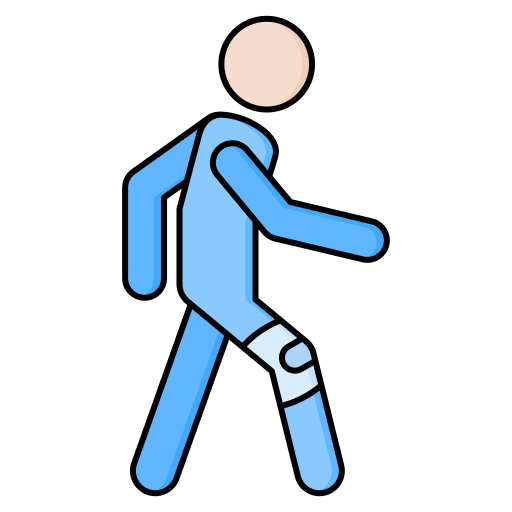Improving knee injury recovery with orthotics, braces and jump rope training.
Hey there, welcome to our fitness corner! Today we’re going to talk about a common problem that many people face – knee injuries. Our knees are an essential part of our body, used in everyday tasks like walking, getting up from a chair, and going up and down stairs. Unfortunately, knee injuries are common, with an annual incidence of one to two million. These injuries can result from degenerative or traumatic causes, leading to pain, swelling, and limitations in movement. The good news is that there are several therapeutic techniques to help with knee injuries, such as medications and physical therapy. However, one technique that is often overlooked but can be highly effective is jump rope training. Jump rope is a great exercise that not only helps in building endurance and cardiovascular health but also in strengthening the muscles around the knee joint. It’s a low-impact exercise that doesn't put much strain on your joints, making it perfect for those who have knee injuries.

Jump rope training has several benefits, including improved coordination, balance, and agility. It also helps in increasing bone density, leading to stronger bones and reduced risk of injuries. Jump rope training is also an excellent way to burn calories and lose weight. It's an effective way to engage your entire body and get your heart rate up quickly. By incorporating jump rope workouts into your exercise routine, you can improve your overall health and well-being. Now, when it comes to knee injuries, one common technique used to support and stabilize the knee joint during the healing process is orthotics. Orthotics refer to any device that is used to support or align the body. In the case of knee injuries, orthotics are often used to provide stability and support to the knee joint during the healing process. There are different types of orthotics available, such as braces and splints, which can be customized based on the patient's specific needs. Jump rope training can also be combined with orthotics to provide additional support and help in the healing process.
💪🏿
For example, rigid knee braces are a type of orthotic device that can be used to secure the knee joint by providing a fixed flexion and extension limit. These braces consist of a solid, semi-rigid frame encased in a semi-rigid plastic or fabric shell. They are held directly against the leg via one of many attachment methods, such as hook and loop straps, clasps, pins, adhesive pads, or hooks and loops secured to the foot sole. Many knee braces are also secured to both the leg and foot via an ankle attachment pad. When it comes to jump rope training, orthotics can help in providing additional support and stability to the knee joint, reducing the risk of further injury. For example, knee bands or thigh bands with a circular pattern can be used to increase the circumference of the leg and provide a strapping method to secure and support the brace to the leg.
👨
By incorporating orthotics into your jump rope training routine, you can achieve better results and reduce the risk of further knee injuries. In conclusion, knee injuries can be a common problem, but there are several therapeutic techniques available to help with healing. Jump rope training is one technique that can be highly effective in building endurance and cardiovascular health while also strengthening the muscles around the knee joint. By combining jump rope training with orthotics, you can provide additional support and stability to the knee joint, reducing the risk of further injury. So what are you waiting for? Take a training jump rope and let's get started!
🌞